To Tweet or Not to Tweet: scientific communication is the new blue
Imani Black ·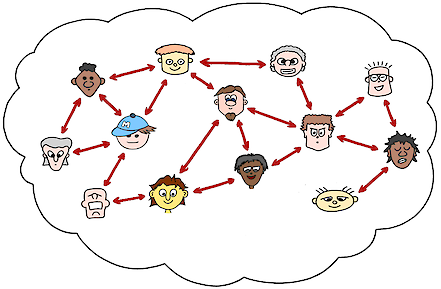
Communication has always been an integral part of the scientific venture. In Week 8 of our Environment and Society course, we discussed with Dr. Madeline Brown, Assistant Professor of Anthropology at the University of Maryland, on how social networks have no doubt changed the way we communicate as a society. Our readings of Janssen et al, Jedd and Bixler & Crona and Bodin, all recognize that social networks embody the social interactions and personal relationships between people emphasizing connections and the information we share amongst each other. However, since the publishing of the readings in 2006 and 2015, the way we interact with each other has rapidly changed, giving us more accessibility for person-to-person interactions.
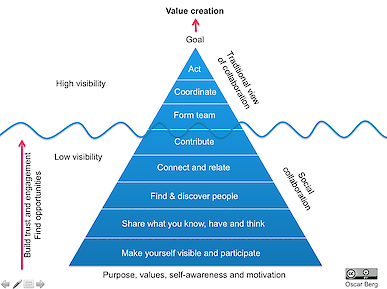
With social media taking up a large space in our daily lives, many have questioned whether it’s impacting how we interact with each other and the world around us. We worry about social media’s impact forgetting oftentimes, “impact” itself doesn’t necessarily mean negative. The use of social media has had both positive and negative effects, but in the world of science, it’s hard to ignore the positive presence of modern digital technology. Facebook, Instagram, LinkedIn, and Twitter have made it possible for us to connect with anyone, anywhere, at any given time.
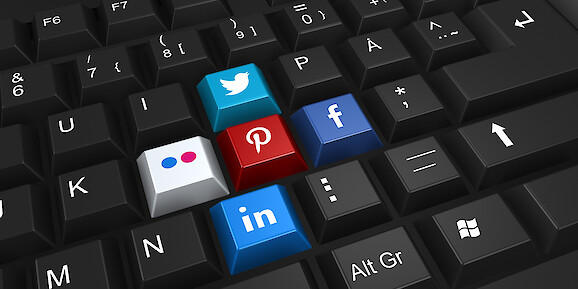
Twitter has been a social networking star gaining major popularity in 2009. The platform has been allowing users to send/receive short messages; 140 characters or less (increased to 280 characters since November 2017), that convey thoughts, opinions, and ideas. It’s crazy to think that Twitter co-founder Jack Dorsey's first tweet ever on March 21st, 2006 would explode across the world to 332 million active users worldwide with 500 million tweets sent every day. Although social media can be highly effective in endless scrolling at times inducing procrastination, the presence of a very popular little blue birdy has changed the distribution of science all over the world.
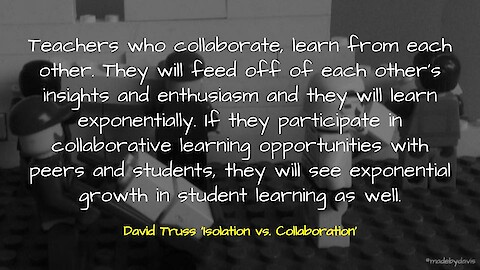
As Dr. Brown mentioned, “humans rarely act in isolation, instead they take the social context into account as part of their decision-making”, which immediately made me think of our community of academia. In the world of academia, science communication is an important phenomenon in modern knowledge societies. There has been a strong call for scientists' engagement in the world of social media more than ever before. Ideology, research, affiliations, hobbies, etc all have been shared among scientists no matter where in the world they find themselves to be. Social media has become a more personal line of communication between scientific minds rather than relying on emails or in-person meetings.
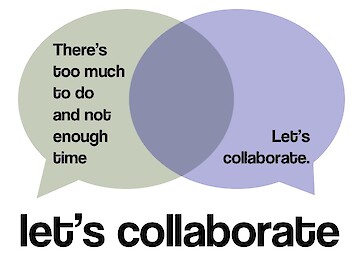
The microblogging platform has emerged as a medium of choice for academic faculty and students. The use of Twitter has increased the reach of scientific messages and direct engagement with non-scientific audiences which has the potential to mitigate the understanding of scientific knowledge, having the potential to leverage the power of weak ties of social interactions between many communities. The aspect of Twitter has facilitated closer, more informal connections between many fields centralizing its practical use of changing communication in research groups. While the platform is still used to express personal opinions, the scientific community mostly focuses on science and science-related issues instead.

The use of Twitter among the scientific community is something that has piqued my curiosity as I’ve started my graduate career. Starting as a simple social media activity, Twitter is now a real career incubator for researchers to develop their professional circles, launch new research projects, and outreach to community engagement at various stages of ongoing research. You are able to present yourself to the community, develop your personal brand and set up a dialogue with people inside and outside of your research field. Of course, with this many benefits of networking, a question that comes to mind is, “How do you use Twitter appropriately within your research field?” Luckily, in the spirit of research and access to information, there are various publications that have been written on how to use social media, specifically Twitter, to advance your presence within your field. The Ten simple rules for getting started on Twitter as a scientist paper by Veronika Cheplygina et al , is a perfect example of how you can advance your personal and professional experience as you move through your research.

Although I strongly believed Twitter would have joined Myspace in the graveyard of social media by now, it continuously has an increased presence in our science community. I’m not sure anyone, maybe even the creators of Twitter, knew how impactful the platform would show to be. Social media can increase productivity and lead to new opportunities and important connections. The era of society-changing ideas and discussions generated over coffee have been at the forefront of our scientific engagement, but now, a tweet might be enough.
References
- Britton, T. B., Jackson, C. A. L., & Wade, J. (2019). The reward and risk of social media for academics. The Reward and Risk of Social Media for Academics with Online Influence. Published. https://doi.org/10.31219/osf.io/bnyfd
- Côté, I. M., & Darling, E. S. (2018). Scientists on Twitter: Preaching to the choir or singing from the rooftops? FACETS, 3(1), 682–694. https://doi.org/10.1139/facets-2018-0002
- Effective Communication and the Information Flow. (2015, September 18). Carpool. Retrieved October 25, 2021, from https://medium.com/@carpooldigital/effective-communication-and-the-information-flow-266e10b34fad
- Horst, M. (2021). Reframing Science Communication: Culture, Identity and Organisations. Department of Science and Technology Studies, UCL, Gower Street, London, WC1E 6BT, United Kingdom. Retrieved 2016, from https://www.ucl.ac.uk/sts/sites/sts/files/horst-2015-reframing-science-communication.pdf
- Leeming, J. (2017, August 23). Social media as a scientist: a very quick guide: Naturejobs Blog. Social Media as a Scientist: A Very Quick Guide. http://blogs.nature.com/naturejobs/2017/08/23/social-media-as-a-scientist-a-very-quick-guide/
- Nature Editorial. (2019, February 8). How to use Twitter to further your research career. How to Use Twitter to Further Your Research Career. https://www.nature.com/articles/d41586-019-00535-w?error=cookies_not_supported&code=5024f653-4bc1-41bb-b0ca-b7d92bc71c88
About the author
Imani Black

Imani Black is a first-year Master’s student at the University of Maryland Center for Environmental Science (UMCES). Imani strives to recognize the historical minority engagement and social barriers in Chesapeake Bay commercial fisheries and how that history has impacted current minority engagement in the industry.
Next Post > My Introduction to Chesapeake Bay
Comments
-
Bill Dennison 4 years ago
Imani, I know that obtaining and integrating relevant images with proper attribution and permission into your blog was a heavy lift, but it really paid off. The images that you ultimately selected are visually attractive, information-rich and highly relevant. I like the way that you took the concepts introduced by Maddie Brown and applied them to our scientific community. Like you, I am surprised at how important Twitter has become in disseminating scientific updates. It certainly makes sense to follow Twitter feeds regarding scientific topics that interest you. The value of tailoring your Twitter feed to topical issues is great, but I also encourage following other blogs and journals that expose you to a wider range of topics. For example, I enjoy following The Conversation and a few journals like Estuaries and Coasts, Bioscience, and Nature. As always, I love the way you take in content from the course readings, lectures and discussions and apply them to your world. Good job, Imani.
-
Nick Dawson 4 years ago
Imani,
Just like you, I am amazed how central and strong twitter has become for the scientific community. A lot of the accounts I follow are related to microplastic pollution, climate change and current scientific projects that I find intriguing. Going off Twitter, I would seen say Instagram has started to become a tycoon in the scientific community. Uploading photos and videos that document center projects on Instagram has been big in grabbing a lot of peoples attentions. I have thought about making a separate account on both twitter and Instagram that just follows relevant research I end up doing later. Really enjoyed your blog. -
Jana Kopelent-Rehak 4 years ago
Thank you for your blog Imani!
I always enjoy the applied and inclusive quality of your work. Your blog made me think about how rapidly technology re- directs new subcultures and their communications systems. I find social media just like technology to be a double agent, in the sense that there is a price to pay for the progress we don't always like to see, or fully grasp. I reduce my life to emails and Facebook, I am not on Twitter, but I am very aware of social subgrouping on media. If you are ever interested in Anthropology and media, see the book Facebook, by Danile Miller and you may also find interesting environmental media work by Dominic Boyer. -
Shuyu Jin 4 years ago
Imani, your extension of the network is significant. I don't use tweets very often, including other social media. One of the main reasons is that my acceptance of fragmented information is not too high. But after reading your comments, I think it is indeed one way to follow up the research progress.
The social platform depends on everyone's use methods, and different purposes will lead to different results. It is like a classification platform, clustering according to everyone's characteristics. Today, with the development of the network, we enjoy the convenience brought by technology. At the same time, I also think whether fragmented information/time is more conducive to our time allocation and management?
-
Barry Bowman 4 years ago
Imani,
You mention that the way we interact has rapidly been changing since the papers we read were published. This struck a chord with me, as I think about how technological advances seem to outpace efforts for the application of those technologies. I don't have much personal experience with social media, but I do agree that it can be a tool for sharing information, especially in a format that fits the attention span of most social media consumers. With misinformation, biased portrayal of data, and outright conspiracies polluting social media platforms, I think it is important for members of the scientific community to be involved and share their knowledge. I have seen this on a couple platforms about politically charges issues, such as history professors have responded to logical fallacies in political arguments to support social equity and justice (i.e. @thehistorywizard). -
Nicole Holmes 4 years ago
Imani! The Green Queen!
I loved this. My first thought in reading this was "I wonder how Yik Yak is gonna come back on the scene, and if scientists will start anonymously posting shade about one another there since there's no real consequences". That was more of a speculative thought than anything, but fun to think about none-the-less. My second thought was that, I feel as though scientists aren't allowed to be seen as human in these virtual social realms, at least that's how it feels to me. Most of these platforms are created to connect and have fun with one another, but it seems as if scientists are always expected to use them as some sort of gain, whether it be for networking or showing their work off to other scientists. I truly hope that one day, we can all be people again, and we don't have to put up this façade of being professional all the time when we want to live our lives and have fun too!
-
Yanyu Wang 4 years ago
Hi Imani!
Thank you for raising the importance of social media to promote the scientific communication and expand the impacts to more audience. Also, practicing the expression in a succinct and understandable way is critical when we try to explain the meaning of scientific findings to general audience. I am concerned when I saw social media nowadays is filled with the entertainment gossip, younger generation spend more time on browsing this type of information. I am also not quite sure if we use more eye-catching ways to promote scientific discoveries, will we receive more attention or stay the same. I hope that the impacts of scientific communication could go beyond small coterie to a broader impacts but how can we make that happen still call into question.

